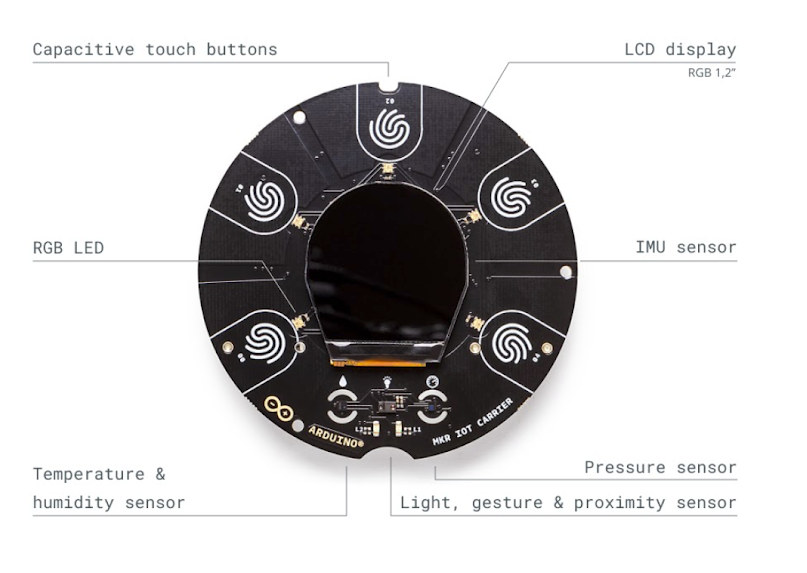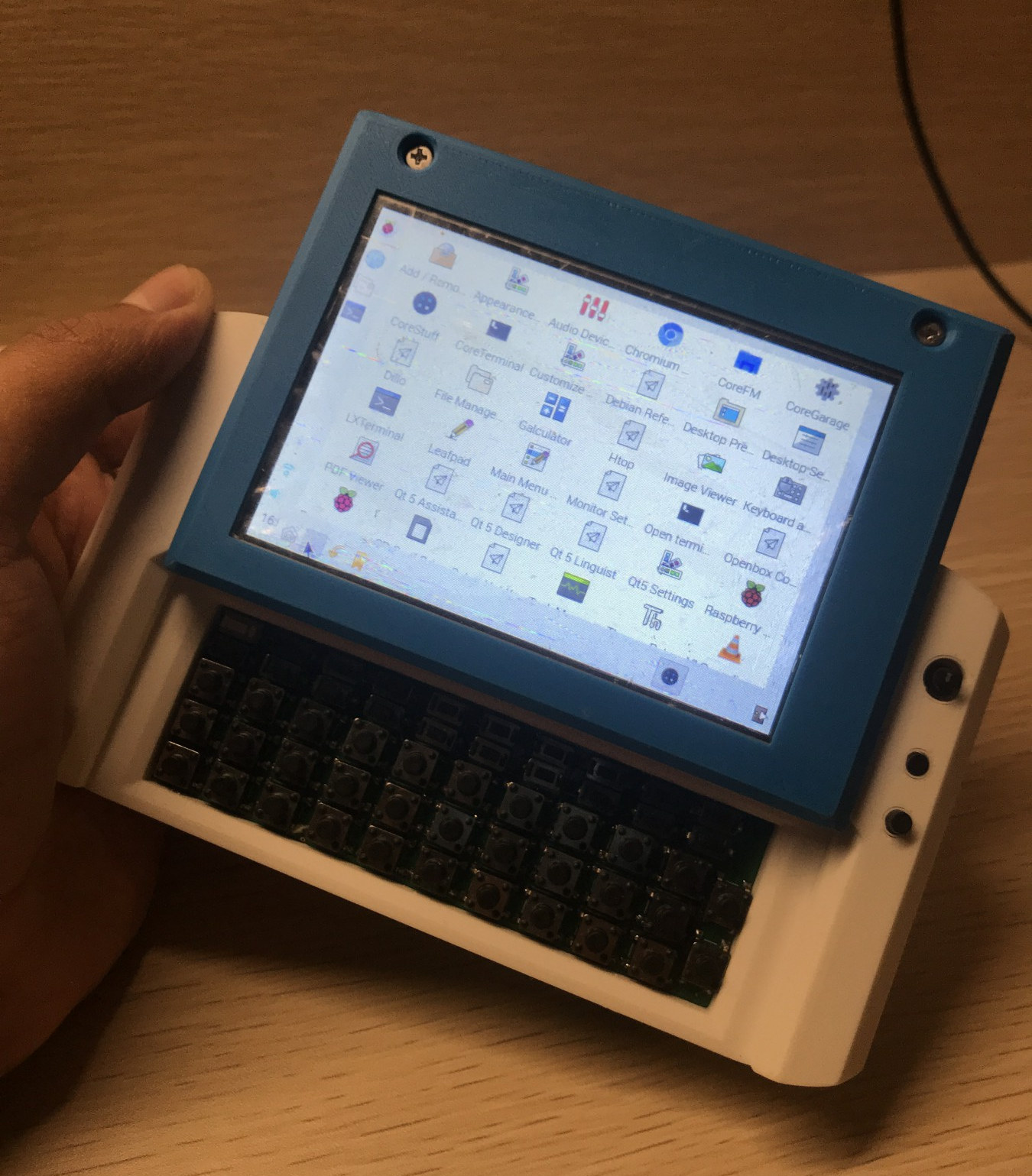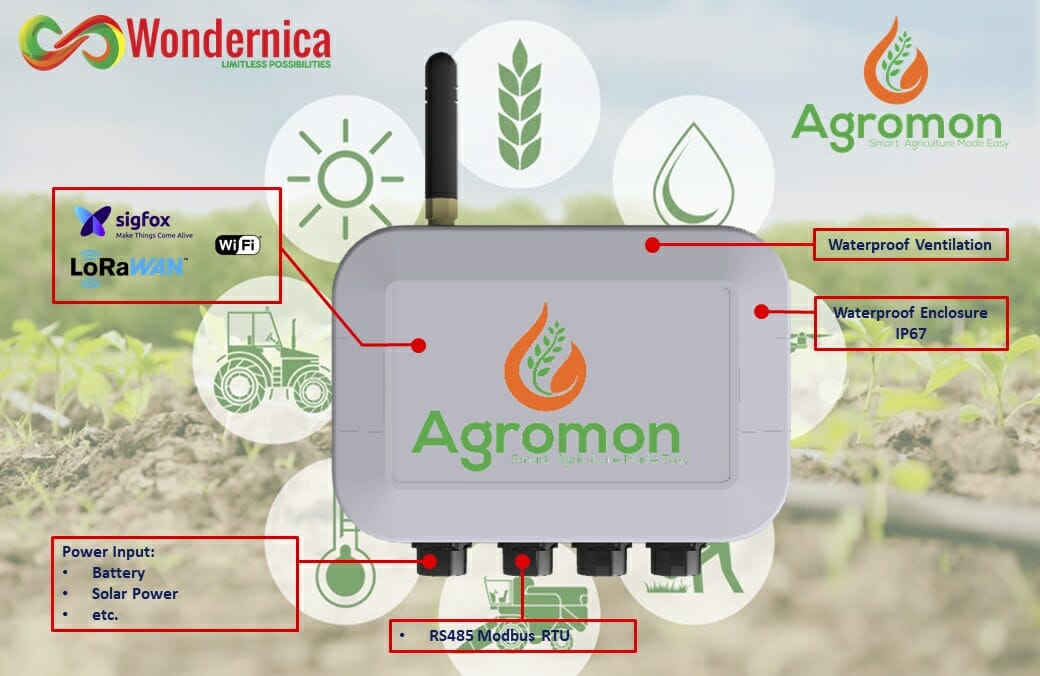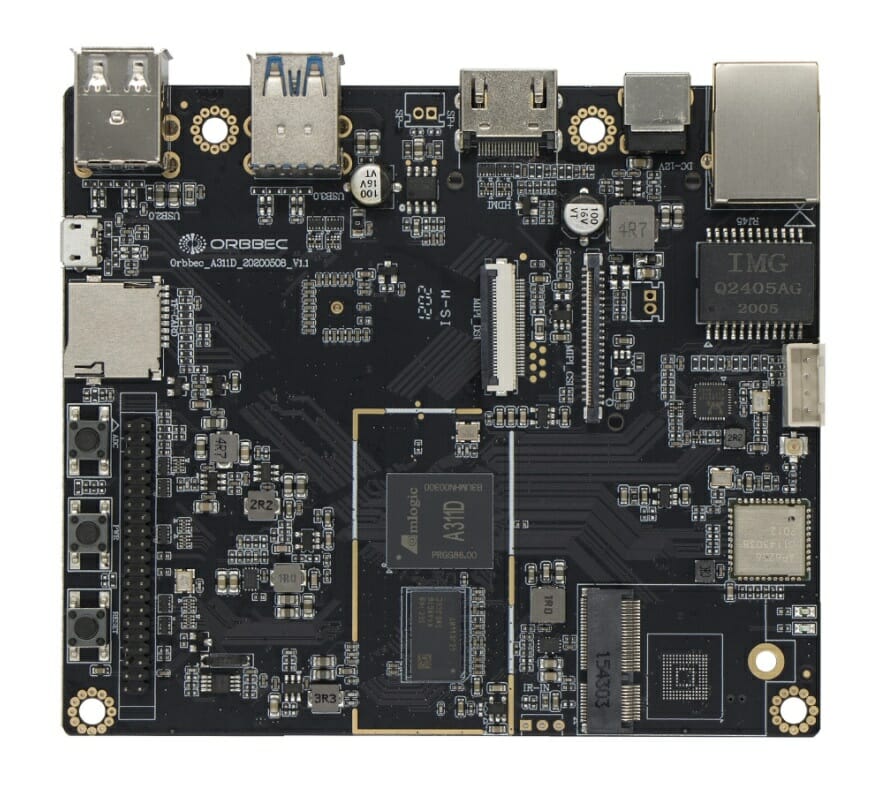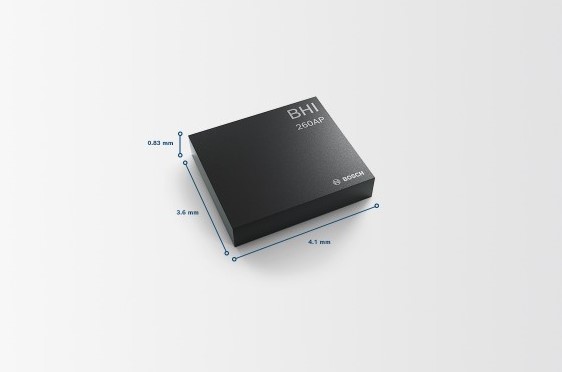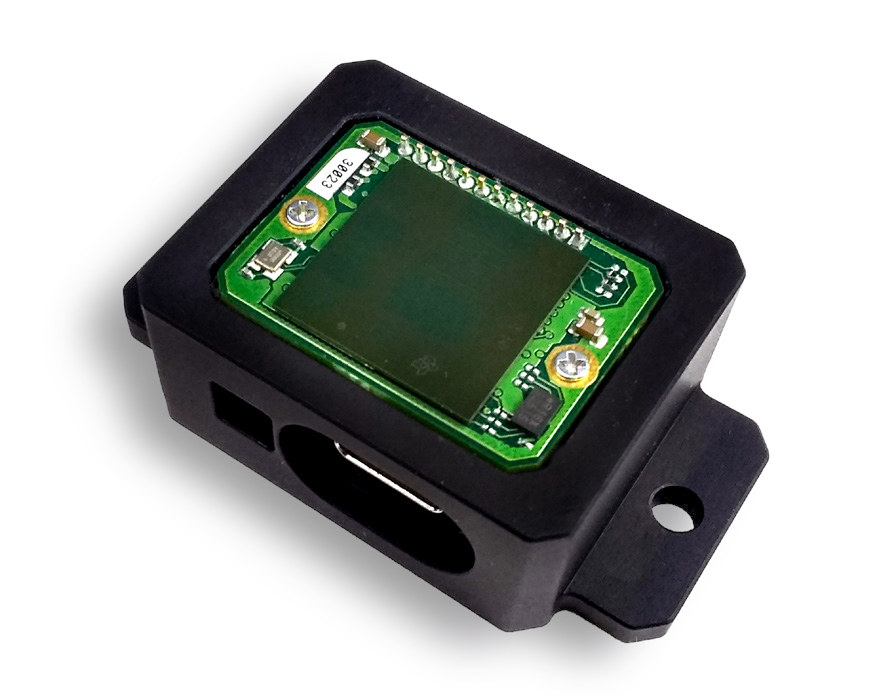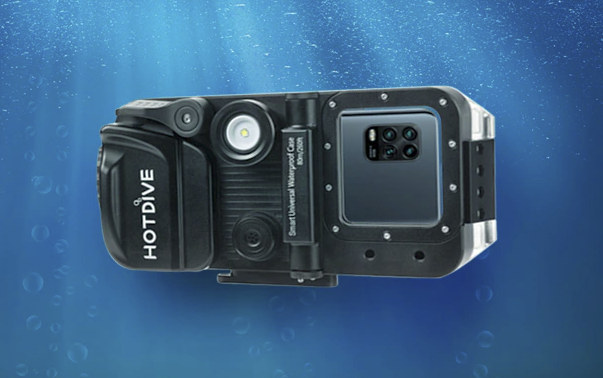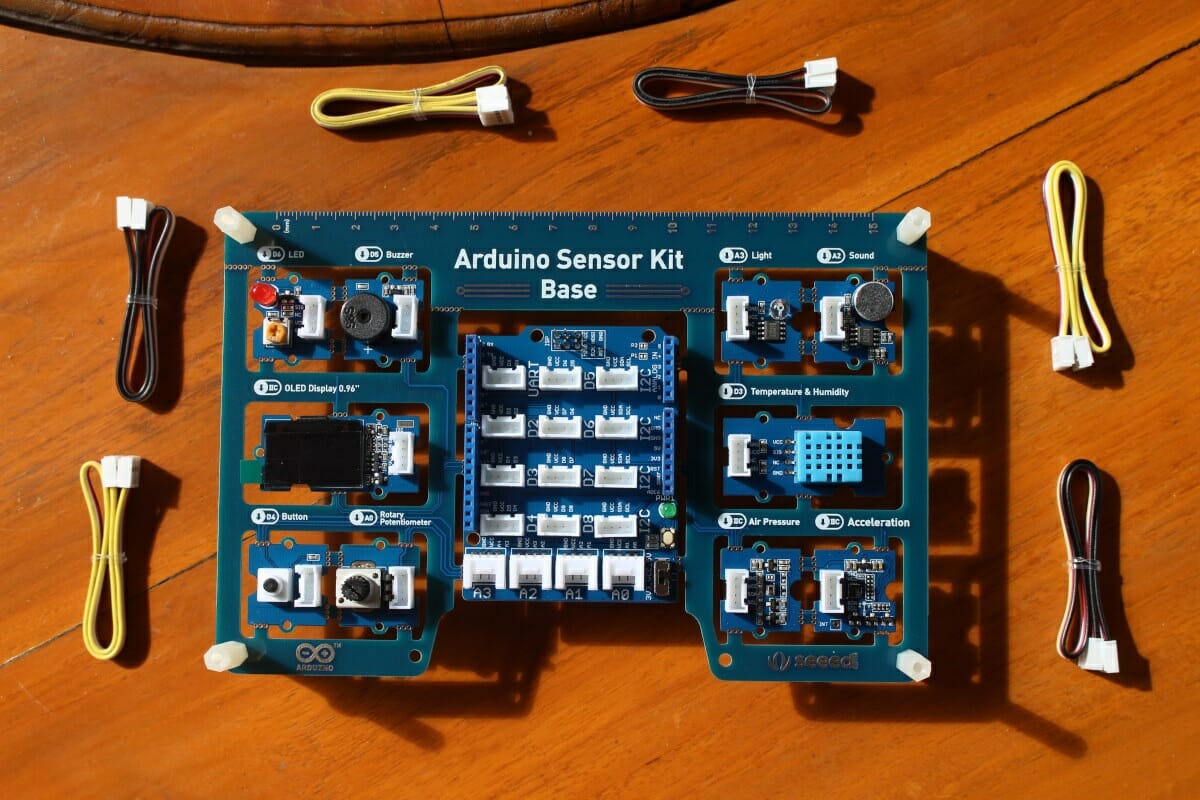Arduino Oplà IoT Kit was launched last fall as the first open programmable IoT platform from the company. The kit included everything you need to create your own IoT devices with MKR IoT carrier with a 1.3-inch OLED color display, environmental sensors, capacitive touch buttons, Arduino MKR WiFi 1010 board, external PIR motion and moisture sensors, a circular plastic enclosure, and various cables. But the community soon wanted to only buy the carrier board without having to purchase the whole kit, so Arduino has just started to sell MKR IoT Carrier board as a standalone product. Arduino MKR IoT Carrier features & specifications: Compatible with Arduino MKR family boards with WiFi, LoRa, NB-IoT, or 3G cellular connectivity Storage – MicroSD card holder Display – Round 1.3-inch OLED display I/Os 2x 24V relays 3x Grove connectors include two analog and one digital (I2C) Sensors – Temperature, humidity, pressure, RGBC light, gesture […]
MutantC v3 open hardware DIY UMPC works with Raspberry Pi and compatible SBC’s
FOSDEM 2021 open-source developer event will take place online later this week, and yesterday we compiled a list of talks, with one entitled “MutantC PDA introduction – open source and hardware PDA shell” piquing my interest. The talk will be about the third revision of the hardware which allows you to create your own UMPC or handheld computer powered by a Raspberry Pi SBC or other compatible single board computers including Asus Tinker Board S, PINE H64 Model B, Banana Pi BPI-M4B, among others. MutantC v3 is versatile and highly customizable as can be seen from the specifications highlights: Supported SBCs – Raspberry Pi Zero, 2, 3, 4 and compatible. Arduino for keyboard – SparkFun Pro Micro 5v/16Mhz or SparkFun Qwiic Pro Micro – USB-C Display – 2.8-inch, 3.5-inch, or 4-inch “GPIO” LCD such as AdaFruit PiTFT 480×320 display Custom PCBs for display, mainboard, and thumbstick Expansion External 12-pin “docking” […]
Agromon smart agriculture wireless transmitter connects ModBus RS485 sensors to WiFi, LoRaWAN, Sigfox, or NB-IoT
The Internet of Things has many applications including smart agriculture . A few months ago, I talked to a local shrimp farm owner who used Arduino and ESP8266 boards to monitor water and activate pumps only when needed to get shrimps healthy and save on his electricity bill. He built his own solutions, but there are also companies offering easy-to-use smart farming solutions such as Malaysia-based Wondernica’s Agromon “interface wireless transmitter” designed specifically for smart agriculture applications. Agromon has two variants with support for 2 sensors (WR-AGRO-2S) or 3 sensors (WR-AGRO-3S) that share the following specifications: Connectivity – WiFi, Sigfox (RCZ 2/4), LoRaWAN, NB-IoT Sensor Interface – Modbus RS485 (analog input / 4-20mA / 12V-14V output) Power Supply – 12V DC (tolerance up to 14V); supports batteries, solar power, or power adapter Power Consumption – Sleep Mode: 3 mW Dimensions – 130 x 90 x 40mm Ingress Protection – IP67 […]
Zora P1 Amlogic A311D Development Board interfaces with Orbbec 3D Cameras
We have already seen the powerful Amlogic A311D powered Khadas VIM3 SBC, and Orbbec announced the Zora P1 development board for Orbbec 3D cameras, supporting robotics, gaming, smart homes, etc. Some of the other products showcased at the CES 2021 by Orbbec include its first 3D sensor with time-of-flight (TOF) technology, the latest Astra+ camera, and a real-time industrial 3D camera. “Innovations in 3D imaging, combined with broader advances like 5G, artificial intelligence, and ultra-fast processors, are transforming the application landscape for designers and engineers,” said David Chen, co-founder, and director of engineering at Orbbec. “Our new camera with time-of-flight (TOF) technology is a great example. Its high resolution and tracking capabilities make it perfect for all kinds of products including fall detection, security, even at-home yoga and exercise products.” Orbbec’s Zora P1 Development Board Zora P1 is a processing board for developers and enthusiasts to integrate 3D imaging and associated computing tasks for demanding industrial applications. Orbbec has specially designed this long-lasting solution to work with its 3D […]
BHI260AP is an AI smart sensor with built-in IMU by Bosch Sensortec
BHI260AP AI smart sensor integrates a 6-axis IMU, a 32-bit customizable programmable microcontroller, and various software functionalities. The AI smart sensor has embedded AI with on-sensor applications such as fitness tracking, navigation, machine learning analytics, and orientation estimation. The dimensions of the miniaturized AI smart sensor are 4.1mm x 3.6mm x 0.83 mm. Hardware Features of BHI260AP AI Smart Sensor ARC EM4 CPU includes ARCv2 16/32 bit instruction set working up to a frequency of 3.6 MHz. The core also integrates Floating Point Unit (FPU) and Memory Protection Unit (MPU) with 4 channel micro DMA controller. CPU has two modes of AI functioning at 25Hz and 50Hz with 249µA and 386µA of current consumption respectively. Integrated sensor (6-DoF IMU) includes 16-bit 3 axis accelerometer and 16-bit 3 axis gyroscope. The sensor works at an operating voltage of 1.8 V with a standby current value of 8µA, hence the power consumption […]
Tiny mmWave radar sensor embeds Cortex-R4F core for object tracking, classification
The 1″ cube mmWave RS-6843AOPUA radar sensor, announced by D3 Engineering, is a miniature radar device that enables easy integration of radar algorithms for industrial applications. The RS-6843AOPUA radar sensor is an AECQ-100-qualified 60 GHz device that integrates a Texas Instruments C674x DSP for algorithms and an Arm Cortex-R4F microcontroller unit for decision-making and interfacing. It also has a radar accelerator and an “on-package antenna array.” The RS-6843AOPUA radar sensor features a 1-inch cube form factor, heat-spreading metal body, mounting tabs, and a USB-Serial interface. The USB-Serial interface could be used to test and evaluate the radar sensor. Functions and Applications of the Radar Sensor TI C674x DSP: FMCW (Frequency Modulated Continuous Wave) signal processing, Implementation of algorithms Radar Accelerator: Radar data processing Arm Cortex-R4F MCU: Object tracking, Classification, Communications “The RF front end integrates a PLL, three transmitters, four receivers, and baseband ADC, and allows the sensor to cover […]
HotDive converts your smartphone into a dive computer and underwater camera (crowdfunding)
Many recent phones are fitted with a pretty good camera, and some are waterproof, but not quite enough to go snorkeling or diving. If you could, your phone could also double as a dive computer, and that’s exactly what HotDive provides: a waterproof enclosure for your smartphone allowing you to dive up to 80 meters deep, and convert your phone in a dive computer, underwater camera, and fill light at a fraction of the cost of specialized diving equipment. HotDive enclosure includes an independent auto-pump air extraction system creating a vacuum for your smartphone to make sure all photos are clear of fog, as well as a fill light to take clear photos even during night dives. The fill light is made of CREE LED lights delivering 800 lumens, and providing with 130° illuminance and 5800-6500K sunlight-like color temperature. The HotDive Pro version includes hardware to create a built-in dive […]
Arduino Sensor Kit Base is a large shield for Arduino UNO with 10 modules
Earlier this year, Seeed Studio introduced the Grove Beginner Kit for Arduino that included the Arduino UNO compatible Seeduino Lotus board placed at the center and ten pre-wired and detachable Grove modules to get started with sensors on Arduino with no cabling whatsoever apart from the USB cable. Arduino must have seen and liked the design, and Seeed Studio has collaborated with the Italian company to create the Arduino Sensor Kit Base with a very similar design, but with a twist as instead of an all-in-one platform with modules and an Arduino board, it’s a very large shield that seats on tops of Arduino UNO. The Arduino Sensor Kit base includes the following: Base shield with 16 Grove connectors, instead of just 12 Grove connectors on the Beginner Kit, including 7x digital connectors, 4x analog connectors, 4x I2C connectors, and one UART connector; A 3.3V/5V voltage switch is also included […]


